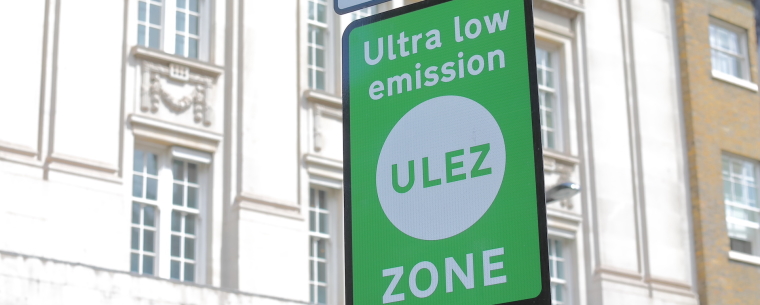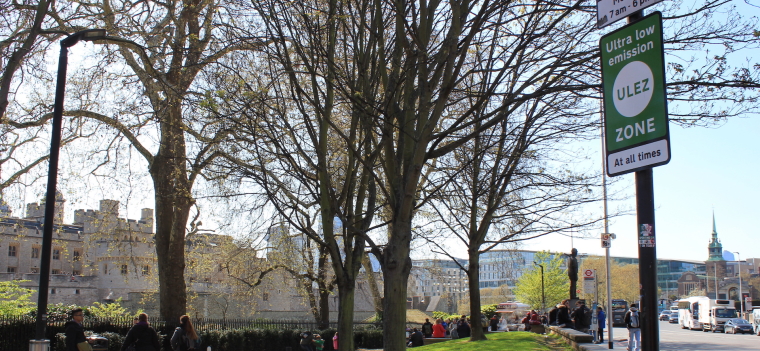What to Know About The Ultra Low Emission Zone Expansion
Jack Dreyer | Monday 23rd January 2023 12:00pm

In a bid to clean up the pollution in London, the LEZ (Low Emission Zone) was launched in Greater London in 2008 and has been successfully in operation ever since. The Ultra prefix was added in 2019 to cover a denser area of central London and was expanded on the 25th October 2021 to nearly 18 times its original size Ė causing quite a stir and leading the way among UK cities to greener streets.
Sadiq Khan has recently announced a further expansion of the Ultra Low Emission Zone to include every area of the Greater London Authority Area Ė set to take effect on the 29th August 2023.
The expressed aim here is to take the benefits of central Londonís ULEZ and have them felt across all areas of the city.
Read on to find out more about the ULEZ and how itís helping make the streets greener.
What is the ULEZ?
The Ultra Low Emissions Zone is an area regulated with the aim to control the amount of emissions from vehicles. It started with the innermost parts of London, where congestion has always been the worst, and has steadily been expanded in light of studies showing the positives of the first ULEZ since 2019.
Fundamentally, itís a daily charge on vehicles that donít fall below a certain emissions threshold. Moreover, itís charged on a daily basis to discourage drivers of older, more polluting vehicles from entering the zone. So even if you enter the ULEZ for five minutes, youíre liable to be charged.
Itís important to note that the emissions threshold isnít zero Ė that is, itís not only reserved for all-electric vehicles. Itís simply set to deter a great deal of unnecessarily large vehicles from finding routes through central London Ė other than, of course, delivery and goods vehicles.
Why has the ULEZ expanded?
While it may seem an attempt to reduce CO2 emissions in line with the general focus on carbon footprints of the last two decades, the ULEZ is primarily intended to reduce roadside emissions. Specifically, emissions of nitrogen dioxide and other highly toxic substances which have been shown to be significant contributors to health problems such as early onset dementia and asthma.
The Mayor of London site points out that nearly half of London households donít own a car but are disproportionately affected by emissions. And this isnít reserved strictly for the densest part of central London. Areas of London such as Lewisham borough, for example, similarly have around 50% of household car ownership but, until 2020, regularly exceeded the target minimum NO2 thresholds Ė usually because of traffic passing through.
The overall aim of the ULEZ is to reduce nitrogen dioxide emissions by 30% across London and, while the original zone ended up reducing roadside levels by 44%, other areas of the city still exceeded legal pollution limits.
Which areas does the ULEZ expansion include?
The previous ULEZ covered all London areas inside the North Circular A406 road and the South Circular A205. While the roads themselves do not count, everything inside them does. Since October 2021ís expansion of the ULEZ, it now covers 140 miles of London, including thousands of vehicles.
Since expanding in 2021, the ULEZ now reaches beyond the City of London and Westminster into the central boroughs of Camden, Haringey, Hackney, Islington, Kensington & Chelsea, Tower Hamlets, and Hammersmith & Fulham entirely.
Aside from this, Southwark, Lambeth, Lewisham, Richmond, Ealing, Enfield, Hounslow, Bren, Barnet, Newham, Redbridge, Waltham Forest, and Greenwich are also covered partly by the ULEZ. You can use this postcode checker to see if your place of residence or travel destination falls inside the 2021 ULEZ.
From 29th August 2023, however, the ULEZ will cover every area of London Ė you can see the boundary map here.

When is the ULEZ in operation?
Since its inauguration, the Ultra Low Emission Zone is in action 24/7. Since it functions like a law, or a toll (like the Dartford Crossing Toll), the ULEZ is always imposed 365 days a year and applies to pretty much all vehicle types. There are, however, certain ULEZ exemptions such as for classic cars and zero-emission electric vehicles.
What are the ULEZ charges?
Though the ULEZ has expanded, the charges are still the same. If your vehicle does not meet the emissions standards, you will be faced with a fee to pay ó even if you live inside the ULEZ zone. For most vehicles (cars, motorbikes, vans, specialist vehicles up to and including 3.5 tonnes, and minibuses up to and including 5 tonnes) this is around £12.50 per day.
Vehicles over 3.5 tonnes like lorries and vans, as well as minibuses and coaches over 5 tonnes, will need to pay £100. Aside from this, the pre-existing Congestion Charge also applies and recently rose from £11.50 to £15.
For more information on the new ULEZ expansion, head over to the Transport for Londonís website. In the meantime, if youíre concerned about the emissions or quality of your vehicle, get in touch with the experts at your local Kwik Fit centre.
Any facts, figures and prices shown in our blog articles are correct at time of publication.
Featured Articles
Is it Illegal to Drive With One Headlight?
Saturday 19th July 2025
Wondering if itís illegal to drive with one headlight? Learn about the safety risks and penalties of illegal blown bulbs and why you should fix them promptly.
Air Con in EVs & Hybrids: Experts Answer Your Questions
Monday 30th June 2025
Does air con drain EV batteries? Can you use the air con while charging an electric car? Find out the answers to these questions & more from Kwik Fitís experts.
Why Is Your Car Making a Noise? Fixes & Tips
Friday 13th June 2025
When your car starts making unexpected noises, it can certainly be quite disconcerting; it may be nothing to worry about, but hereís what you need to know.









